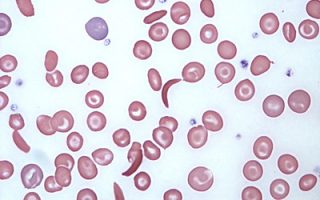
GM/Biotech Crops Report – November 2019
4th November 2019- GM/Biotech Crops Monthly Reports (BELOW) form part of BCPC’s free three-tier Biotech Crops Info service.
- This service also includes a weekly round-up of news from around the globe – see BCPC Newslink GM Crops section.
- Plus – Free access database on over 300 GM/biotech products covering 23 crops in the global market visit BCPC’s GM/Biotech Crops Manual – Register here for free access.
Already registered? Click here
GM/Biotech Crops Monthly Report November 2019
 |
Crops without water Optimum yields will always require optimum water supply but a team at Tulca University in Chile have developed maize that is better able to yield in dry conditions. Deprived of water for 52 days before harvest standard variety yields drop to just 20% of the optimum while the engineered maize is still able to achieve 80% of optimum yield. The article (in Spanish) can be found at the following link. More.
|
|---|---|
| Taking the bull by the horns?
Cattle often have their horns removed at a young age to make them easier to handle and transport but now researchers have edited the genome of a bull so that his offspring do not have horns, avoiding the unpleasant process of removing them. If required, can they put them back again? More. |
 |
 |
Gene editing to cure many ills
A new technique of very accurate gene editing (Prime editing) promises to cure 89% of the diseases known to be caused by genetic defects once the problem of delivery of the new instructions is solved. Some diseases such as sickle cell anaemia are relatively easy since the cells can be removed from the body, edited and then easily returned. More. |
| Edible cotton seeds
Cotton seeds contain gossypol and are poisonous to humans but cattle can eat them. Now a team at a Texas University has engineered a cotton with low gossypol in the seed to make them edible. Why? More. |
 |
 |
Improved rice yields A small fragment of RNA, miR396, suppresses the growth of rice panicles and scientists at the Chinese Academy of Science have disrupted the target site of this RNA fragment which has resulted in larger grains of rice carried on longer panicles. More. Pic: Homebody Hubby |
| Improved wheat yields
The Australian Plant Phenomics facility has produced wheat lines that over-express three wild wheat genes which, when grown in field trials, gave increases in yield of 20 – 30%. More. |
 |
 |
Mother’s milk from plants
Formula milk already uses fats derived from plants but the structure of the fats used is more difficult for infants to digest than that found in mother’s milk. Now a team at Rothamsted have modified Arabidopsis to produce a fat structure in the oil that is more easily digestible. The next step is to transfer the trait to perhaps oilseed rape to produce higher quantities of the fats but it still won’t include the mother’s antibodies that the infant also gets in mother’s milk. More. |
| GM crops are natural
Agrobacterium tumefaciens is often employed as the tool to insert new genes into modified plants and it seems that where this bacterium occurs in the wild, it also transfers genes from one organism to another on an unexpectedly large scale: More. |
 |
 |
Drought-tolerant wheat
Apparently there is a good correlation between the abundance of four amino acids in wheat and the drought-tolerance of the plant. This has allowed the Australian national University to quickly assess the likely drought-tolerance of numerous wheat varieties in the greenhouse without the need for time-consuming field trials. More. |
| Dwarf maize
When Norman Borlang introduced dwarf wheats to the world it triggered the Green Revolution because of the increase in yields and now Chinese scientists have developed a dwarf maize plant that shows a 10 – 14% yield increase in field trials by suppressing the effect of gibberellin. Are we about to see Green Revolution mark 2? More. |
 |
 |
Switching on plant defences
Tomatoes and peppers can succumb to bacterial speck but researchers at Stamford University have found that spraying NHP (N-hydroxy-pipecolic acid) on the undersides of as yet uninfected leaves prevents the infection from spreading and eventually killing the plant. More. |
THE LATEST ADDITIONS TO THE GM/BIOTECH DATABASE ARE:
• GHB811 – cotton with glyphosate and isoxaflutole herbicide tolerance approved for food, feed and environmental use in Brazil and the EU.
• MON87427 x MON89034 x MIR162 x NK603 – maize with glyphosate tolerance and Lepidopteran insect resistance approved for feed use in Mexico and food, feed and environmental use in Argentina.
• LBFLFK – oilseed rape with modified oil content and tolerance of imazamox herbicide approved for environmental use in America.
• GHB811 – cotton with tolerance of glyphosate and isoxaflutole herbicides approved for food use in Taiwan.
• MON87427 x MON89Ø34 x MIR162 x NK603 – maize with Lepidopteran insect resistance and tolerance of glyphosate approved for food, feed and environmental use in Brazil.
• GHB811 x T304-40 x GHB119 x Cot102 – cotton with resistance to lepidopteran insects and tolerance of glufosinate and isoxaflutole herbicides approved for food, feed and environmental use in Brazil.
• TAM66274 – cotton with low gossypol seeds that makes them edible by humans approved for food, feed and environmental use in America.
• CTC93209-4 sugar cane with Lepidopteran insect resistance approved for food, feed and environmental use in Brazil..
FOR INSTANT ACCESS TO GM BIOTECH MANUAL CLICK HERE (Registration required)
Already Registered? Click here to access

